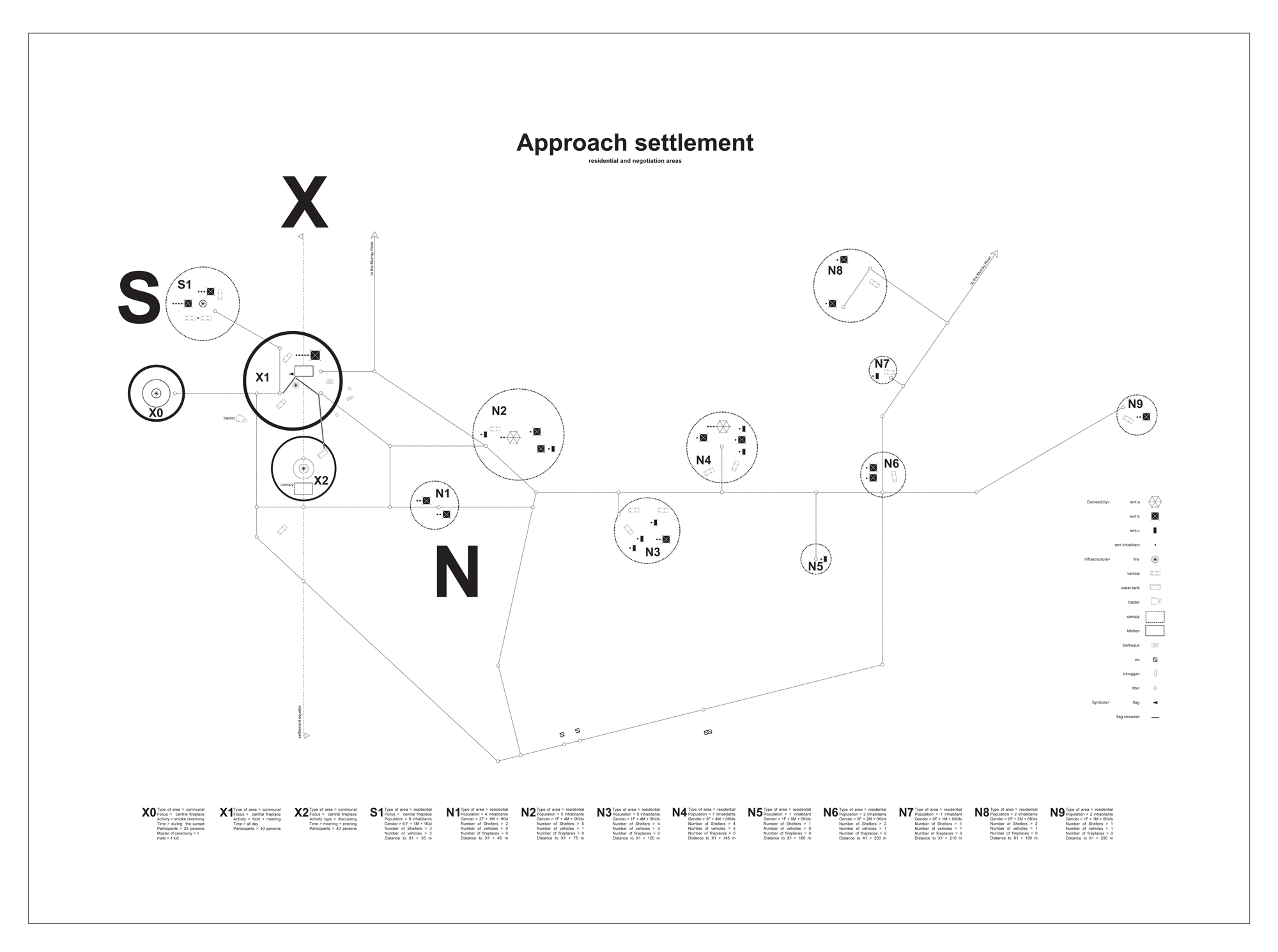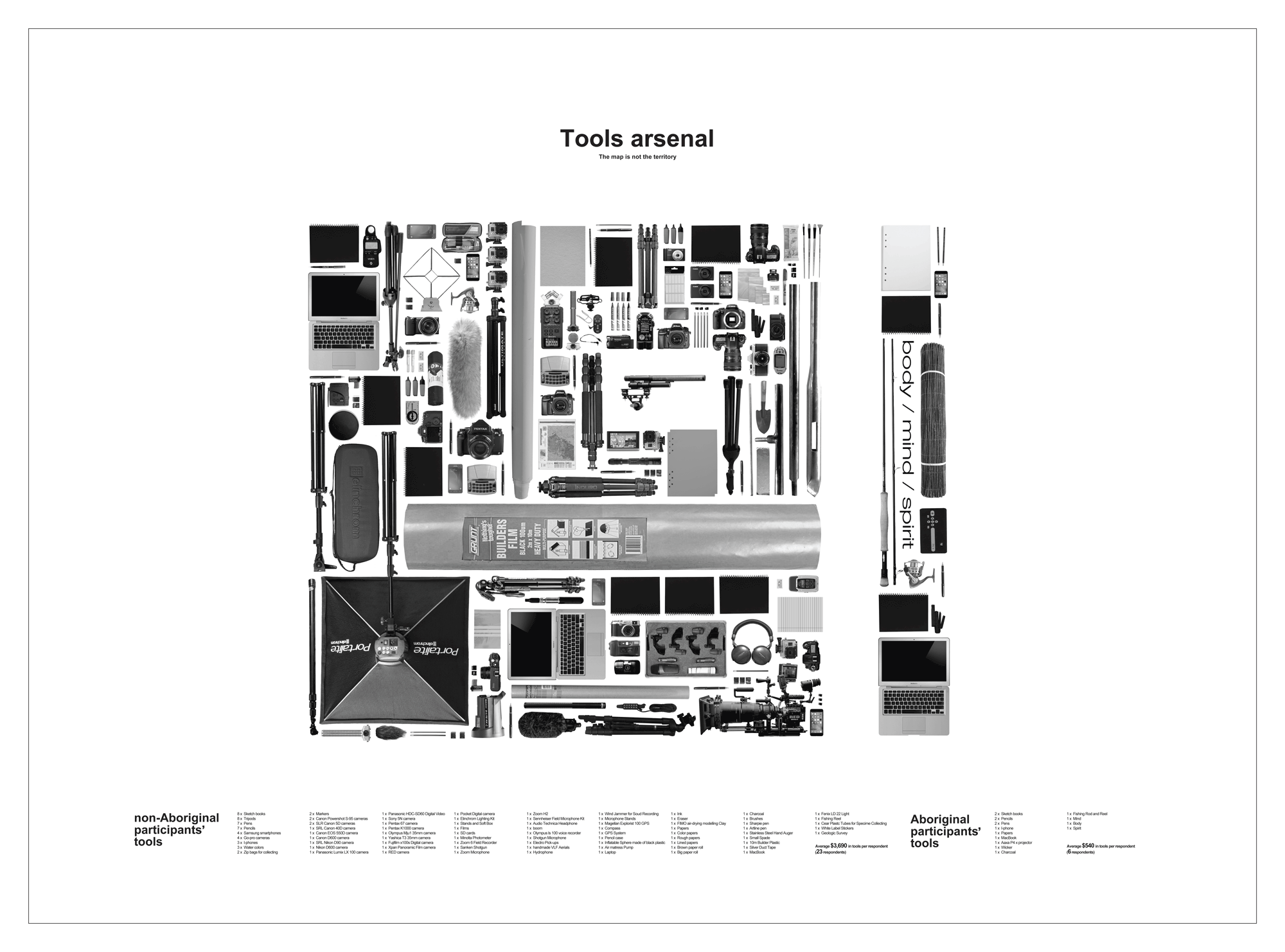‘Asymmetric Meta-Mapping’ is a set of two complementary visual maps that interrogates the agency of mapping as a collective artistic production. It was developed as the result of a workshop that gathered Aboriginal and non-Aboriginal practitioners to re-map the Culpra Station, in southern New South Wales. Participants were asked to propose alternative mapping techniques that would challenge conventional cartography.
The documents aim to construct a critical narrative about social and technological dynamics occurred during the collaborative workshop we were invited to. The techniques applied to compile the information on site included: surveying, dissecting and depicting the actors, tools and technologies used to colonise, utilise and collectively map the territory. As part of the interactions between the participants, several conversations and storytelling sessions took place between us and Aboriginal elders and artists, both from Culpra and from other communities. These conversations and landscape description narratives played a key role in the construction of our maps, as they presented a landscape defined as a relational networks of spaces, technologies and events. ‘ The Agency of Mapping’ presents for the first time the idea of the map doing as opposed to the map representing. When we understand the map as an actor in the production of space, culture and politics, we might start thinking about how maps are actually produced.
Asymmetric Meta-Mapping reflects political asymmetries by unpacking the varied range of mapping technologies and spatial dynamics involved in the production of the cartographic documents. It also explores the possibility of mapping relational processes behind the mapping act itself.

